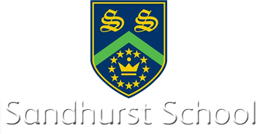Pupil Premium & Catch-Up Report
The Pupil Premium (PP) was introduced in April 2011 and is paid to schools in addition to the main school budget. It is a per-student payment and was introduced to address the perceived inequalities between children who are currently eligible for free school meals (FSM), have been eligible for FSM at any point in the last 6 years (Ever 6), children looked after by the local authority (CLA) and children from service families.
Use of the funding is at the school’s discretion and is monitored by the Headteacher and Governors. The funding supports our work with PP students in a systematic way, with careful prioritisation and due attention to students’ specific and often individual needs. We actively identify all eligible students so that staff know exactly who they are and what their needs are. Each member of staff is responsible for his / her group of PP students’ progress and this is reflected in each department development plan. Data is used to agree strategies and review their impact carefully. PP data is scrutinised, twice a term, at whole school level and departmental level.
We are an inclusive school and at times, the provision on offer may benefit a wider group of students; it is important that support is fully integrated into the school’s systems and may be accessed by a large number of students. Some of the funding is used to recruit staff to posts that are crucial to the well-being and happiness of all our students and most specifically those who have the greatest needs.
The strategies used are not solely focussed in Year 11, but are across all year groups with the most successful strategies from KS4 being expanded into KS3.
Through self evaluation of the interventions used the school is now refining the strategies for the 2023/24 cohort.
| 2021 | 2022 | 2023 | 2024 | |||||||||
| PP | Non PP | Gap | PP | Non PP | Gap | PP | Non PP | Gap | PP | Non PP | Gap | |
| Number of students | 36 | 160 | - | 42 | 150 | - | 36 | 168 | - | 39 | 160 | - |
| 9-4% in English and Mathematics | 70 | 49 | -21 | 57 | 71 | -14 | 44 | 69 | -25 | 14 | 102 | -88 |
| 9-4% in English | 79 | 68 | -11 | 84 | 87 | -3 | 58 | 80 | -22 | 7 | 16 | -9 |
| 9-4% in Mathematics | 78 | 60 | -18 | 77 | 63 | -14 | 50 | 75 | -25 | 2 | 10 | -8 |
| Total Attainment 8 | 48 | 41 | -7 | 42 | 49 | -7 | 40 | 48 | -8 | 34.77 | 45.07 | -10.3 |
| Average Total Progress 8 | - | - | - | -0.7 | -0.26 | -0.44 | **-0.44 | **-0.11 | **-0.33 | -0.58 | -0.39 | -0.19 |
| % Achieving the E-BACC | 22 | 14 | -8 | 4.8 | 10.7 | -5.9 | 2.8 | 15.5 | -12.7 | 3 | 35 | -32 |
*Please note that examination results for 2021 & 2022 were centre assessed grades
** Provisional
2023 to 2024
The school is committed to continuing to raise the attainment and rate of progress of all Pupil Premium students and closing the attainment gap further between disadvantaged and non-disadvantaged students. To achieve this the school identifies individual barriers to learning. Through self-evaluation in 2024 a summary of actions for 2024 to 2025 are outlined below:
- To ensure that interventions in core subjects continue.
- To monitor the progress of PP students in open slot subjects and intervene with a package of support as required.
The impact of the Pupil Premium strategy is reviewed fortnightly by the Raising Attainment Panel (RAP), half termly by the Senior Leadership Team, annually by the Governors (Staff and Student Support Committee) and reviewed through the school self evaluation process in July-September 2025.
The plan for the current academic year along with a review is available using the link below.

